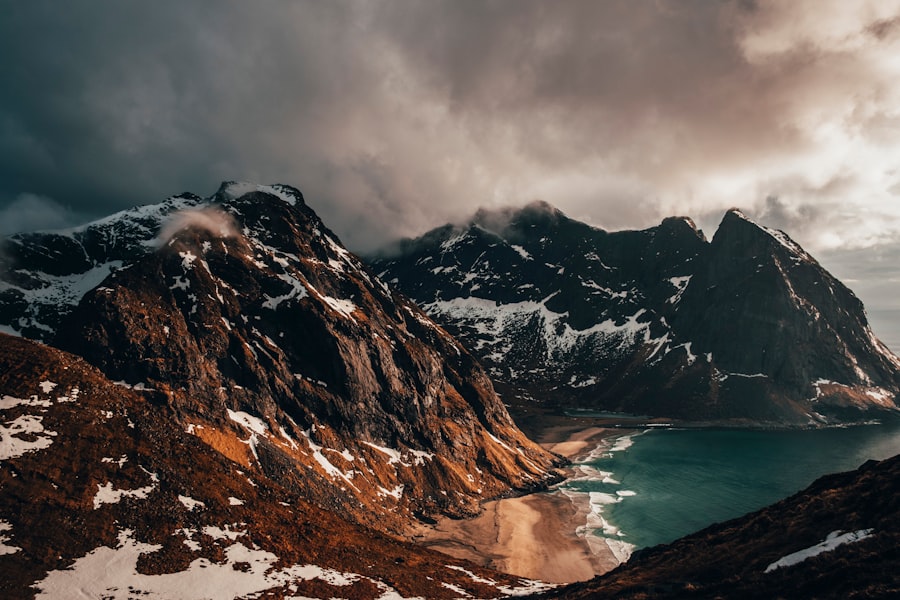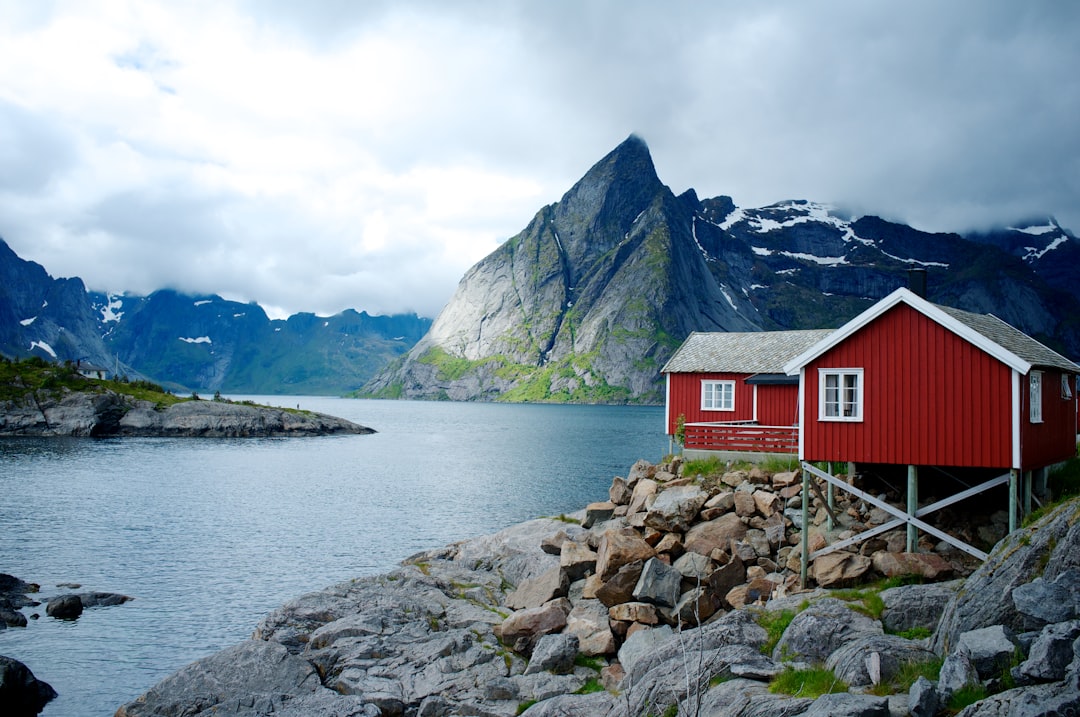Norway is renowned for its breathtaking landscapes, characterised by majestic fjords, towering mountains, and picturesque coastal views. However, beneath this stunning exterior lies an intricate network of tunnels that facilitate travel across the country’s challenging terrain. The Norwegian tunnel system is one of the most extensive in the world, with over 1,200 tunnels spanning approximately 1,240 kilometres.
These tunnels not only connect remote regions but also serve as vital arteries for trade and tourism, making them an essential component of Norway’s infrastructure. The construction of these tunnels has been a remarkable feat of engineering, often overcoming significant geographical obstacles. From the early 20th century to the present day, Norway has invested heavily in tunnel development, driven by the need to improve accessibility and safety.
The tunnels vary in size and purpose, ranging from small road tunnels to massive underwater passages. Each tunnel tells a story of innovation and determination, reflecting Norway’s commitment to connecting its communities while preserving its natural beauty. Book your 1-hour strategy session with Norway Relocation Group.
Summary
- Norway’s tunnel network is an extensive and vital part of the country’s transportation infrastructure, with over 1,000 tunnels in operation.
- When driving through Norwegian tunnels, it is important to adhere to safety tips such as keeping a safe distance, using headlights, and being aware of emergency exits.
- Understanding tunnel etiquette in Norway includes yielding to larger vehicles, using hazard lights when driving slowly, and being mindful of cyclists and pedestrians.
- Norway is home to some of the longest and most spectacular tunnels in the world, including the Laerdal Tunnel and the Eiksund Tunnel.
- Before travelling through Norwegian tunnels, it is essential to prepare your vehicle by checking its lights, brakes, and ventilation system.
- Navigating the toll system for Norwegian tunnels involves understanding the different payment methods and ensuring that your vehicle is registered for toll collection.
- When driving through tunnels in different weather conditions, it is advisable to adjust your speed, use winter tires, and be cautious of icy patches and reduced visibility.
- Drivers can expect well-maintained tunnels with excellent lighting, ventilation, and safety features when travelling through Norwegian tunnels.
- Environmental considerations for driving through tunnels in Norway include reducing emissions, conserving energy, and protecting the natural surroundings.
- Norwegian tunnels hold cultural and historical significance, with some tunnels featuring artwork, historical exhibits, and connections to local traditions.
- In conclusion, embracing the unique experience of driving through Norway’s tunnels offers a blend of natural beauty, engineering marvels, and cultural insights.
Safety Tips for Driving Through Norwegian Tunnels
Driving through tunnels can be a daunting experience, especially for those unfamiliar with the unique conditions they present. Safety should always be a priority when navigating these subterranean passages. One of the most crucial tips is to ensure that your vehicle is in good working order before entering a tunnel.
This includes checking your brakes, lights, and tyres, as well as ensuring that your fuel tank is adequately filled. Running out of fuel in a tunnel can lead to dangerous situations, so it’s wise to plan your journey accordingly. Moreover, it is essential to maintain a safe distance from the vehicle in front of you while driving through a tunnel.
The confined space can create a sense of urgency, but it is vital to remain calm and composed. Adhering to speed limits is equally important; many tunnels have specific speed regulations designed to enhance safety. Additionally, be aware of emergency exits and follow any posted signs or instructions.
In case of an emergency, knowing how to react can make all the difference.
Understanding the Tunnel Etiquette in Norway

Norwegian tunnel etiquette is an important aspect of driving that many may overlook. Understanding the unwritten rules can enhance your experience and ensure a smoother journey for everyone involved. One key aspect of tunnel etiquette is the importance of using headlights at all times while driving through tunnels.
This practice not only improves visibility but also helps other drivers see you more clearly in the often dimly lit conditions. Another crucial element of tunnel etiquette is to avoid overtaking unless absolutely necessary. The confined space can make overtaking risky, and it is generally frowned upon unless you are in a situation where it is safe and legal to do so.
Additionally, if you encounter a breakdown or an emergency situation, it is courteous to pull over to the side of the road if possible and turn on your hazard lights. This allows other drivers to pass safely and helps maintain the flow of traffic.
The Longest and Most Spectacular Tunnels in Norway
Norway boasts some of the longest and most spectacular tunnels in the world, each offering a unique experience for drivers. The Laerdal Tunnel, for instance, stretches an impressive 24.5 miles (39.7 km) and holds the title of the longest road tunnel in Norway. Completed in 2000, this engineering marvel connects Laerdal and Aurland and features several rest areas designed to break up the monotony of the long drive.
These rest areas are not only functional but also aesthetically pleasing, showcasing beautiful lighting and artwork that reflect the surrounding landscape. Another notable tunnel is the Atlanterhavstunnelen, which runs beneath the Atlantic Ocean and connects Averøy Island to the mainland. This underwater tunnel is not only a feat of engineering but also offers stunning views as you approach its entrance.
The experience of driving through these tunnels is enhanced by their design and construction, which often incorporates elements that celebrate Norway’s natural beauty and cultural heritage.
How to Prepare Your Vehicle for Tunnel Travel in Norway
Preparing your vehicle for tunnel travel in Norway involves several key steps that can help ensure a safe and enjoyable journey. First and foremost, it is essential to conduct a thorough inspection of your vehicle before embarking on your trip. This includes checking fluid levels such as oil, coolant, and brake fluid, as well as ensuring that your lights are functioning correctly.
A well-maintained vehicle is less likely to encounter issues while navigating through tunnels. Additionally, consider equipping your vehicle with emergency supplies such as a first aid kit, reflective warning triangles, and a flashlight. These items can be invaluable in case of an unexpected breakdown or emergency situation within a tunnel.
Furthermore, it’s wise to familiarise yourself with your vehicle’s manual regarding any specific features related to driving in tunnels, such as how to operate fog lights or other essential functions.
Navigating the Toll System for Norwegian Tunnels

Many of Norway’s tunnels are part of a toll system designed to fund their construction and maintenance. Understanding how this system works can save you time and money during your travels. Most tolls are collected electronically via an automatic toll collection system known as AutoPASS.
This system allows vehicles equipped with an AutoPASS tag to pass through toll booths without stopping, making for a seamless travel experience. If you do not have an AutoPASS tag, you can still pay tolls using various methods such as credit cards or cash at designated toll booths. It’s important to research which tunnels require tolls before your journey so you can budget accordingly.
Additionally, some rental car companies offer AutoPASS tags for their vehicles, which can be a convenient option if you plan on using multiple toll roads during your stay.
Tips for Driving Through Tunnels in Different Weather Conditions
Weather conditions can significantly impact driving safety, particularly when navigating through tunnels. In Norway, where weather can change rapidly, it’s essential to be prepared for various scenarios. During heavy rain or snow, visibility may be reduced both inside and outside the tunnel.
In such cases, it’s advisable to reduce your speed and increase your following distance from other vehicles. In winter months, icy conditions can pose additional challenges when entering or exiting tunnels. Ensure that your vehicle is equipped with winter tyres if you plan on driving during this season.
Furthermore, always check weather forecasts before embarking on your journey; if severe weather is predicted, consider postponing your trip or taking alternative routes that may be safer.
What to Expect When Driving Through Tunnels in Norway
Driving through Norwegian tunnels offers a unique experience that combines engineering marvels with stunning natural beauty. As you enter a tunnel, you may notice a sudden change in temperature and light levels; this transition can be quite striking. Inside the tunnels, expect well-maintained road surfaces and clear signage guiding you through the passage.
Many tunnels are equipped with modern safety features such as ventilation systems and emergency lighting, ensuring that drivers feel secure during their journey. Some tunnels even feature artistic installations or informative displays that highlight local culture or history, adding an extra layer of interest to your drive. Overall, driving through these tunnels is not just about reaching your destination; it’s about appreciating the ingenuity behind their construction and the beauty of Norway itself.
Environmental Considerations for Driving Through Tunnels in Norway
As environmental awareness grows globally, Norway has taken significant steps to ensure that its tunnel network aligns with sustainable practices. Many tunnels are designed with eco-friendly features such as energy-efficient lighting systems and ventilation that minimises emissions from vehicles inside the tunnel. Additionally, some tunnels incorporate measures to protect local wildlife habitats during construction and operation.
When driving through tunnels in Norway, it’s essential to be mindful of your environmental impact. Consider carpooling or using public transport when possible to reduce carbon emissions associated with travel. Furthermore, maintaining your vehicle in good condition not only enhances safety but also contributes to lower emissions overall.
Cultural and Historical Significance of Norwegian Tunnels
Norwegian tunnels are not merely functional structures; they hold cultural and historical significance that reflects the nation’s identity and resilience. Many tunnels were constructed during challenging times when accessibility was crucial for economic development and community connection. The stories behind these constructions often highlight local traditions and craftsmanship.
Moreover, some tunnels have become landmarks in their own right, attracting tourists who wish to experience their unique architecture and history firsthand. For instance, the historic Romsdalen Tunnel showcases traditional Norwegian building techniques while providing breathtaking views of the surrounding landscape. By exploring these tunnels, visitors gain insight into Norway’s rich heritage and the innovative spirit that has shaped its infrastructure.
Embracing the Unique Experience of Driving Through Norway’s Tunnels
Driving through Norway’s extensive tunnel network offers an unparalleled opportunity to explore this beautiful country while experiencing its remarkable engineering achievements firsthand. From understanding safety protocols and etiquette to appreciating the cultural significance behind these structures, every aspect contributes to a richer travel experience. As you navigate through these tunnels—whether they are long stretches like the Laerdal Tunnel or breathtaking underwater passages like Atlanterhavstunnelen—you will find yourself immersed in both adventure and history.
For those looking to deepen their connection with Norway during their travels, consider enrolling in Norwegian language courses at NLS Norwegian Language School in Oslo. These courses provide an excellent opportunity not only to learn the language but also to engage with local culture more profoundly—making your journey through Norway’s tunnels even more meaningful as you converse with locals about their stories and experiences related to these incredible structures. Embrace this unique experience; let Norway’s tunnels guide you through its stunning landscapes while enriching your understanding of its culture and history along the way.
Speak Norwegian with confidence. Enroll in a class at the NLS Norwegian Language School now.

